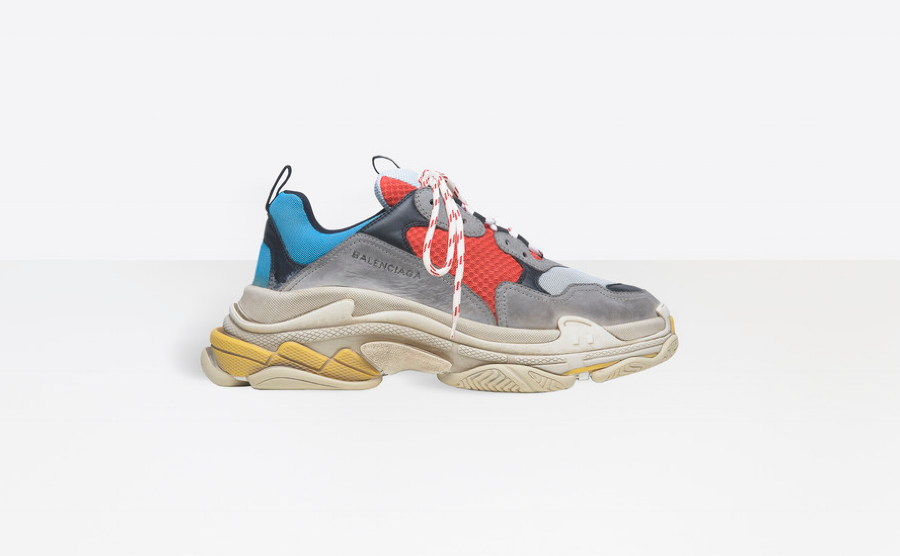
image: Balenciaga
Casual luxury is driving global sales of high-end garments and accessories as big-spending consumers look for low-brow statements in t-shirts, sneakers and rubber sliders, according to a study released Thursday by Bonton-based consultancy Bain. Driven by millennial shoppers, “with help also from their comfort-seeking parents and the next generation of consumers, teens,” said Bain partner Claudia D’Arpizio, sales of personal luxury items including apparel, footwear and handbags, have been boosted upwards of $329 billion, up 8 percent from $308 billion in 2017.
Young consumers who were previously “detached” from the luxury market are now buying individual pieces that appeal to them — whether it be sneakers or t-shirts — and thereby, are participating in the luxury market more readily than ever before. “The really-growing brands now beating the market are the ones already hooking these teenagers,” according to D’Arpizio. “This is the first time this is happening in the history of luxury, that some brands are becoming so appealing to young consumers.”
Some of the demand for luxury amongst some of the market’s youngest consumers is due to the power of social media, particuarly Instagram, which provides as a constant outlet and opportunity for brands to market to this young demographics. It also enable brand to build “a sense of urgency” around fashion trends to prompt consumer spending.
Aside from serving as a way to reach new groups of consumers, Bain claims the demand for casual and streetwear has helped luxury producers by giving them a whole new slew of products, including the relatively new-found obsession with “ugly footwear” but also gives household names, such as Fila, Nike, Adidas and Birkenstock, more access to big-spending consumers of luxury goods thanks to an influx of collaborations.
Bain’s findings, which are firmly in line with Balenciaga’s recent emergence as the fastest-growing brand under the Kering umbrella with its “ironic” takes on apparel and slightly-off-kilter styling, also assert that apparel is growing much less significantly than accessories. This appears to be true for Gucci (and nearly all other high fashion brands, to be frank). The buzzy Italian design house reported on Thursday that it expects its sales to grow at twice the pace of the luxury market in the coming years and for revenue to eventually reach $11.82 billion. A larger driver of growth: Its high-margin items like leather handbags.











